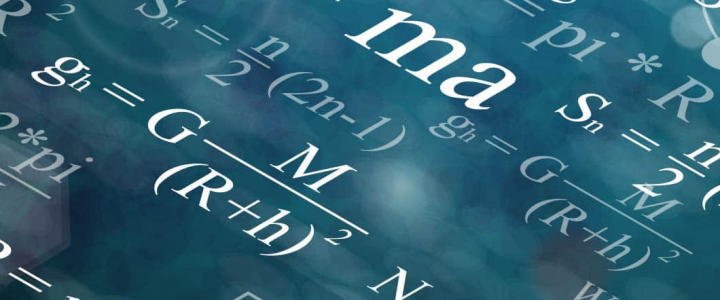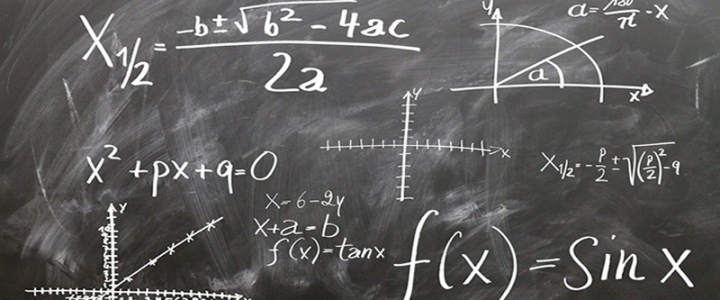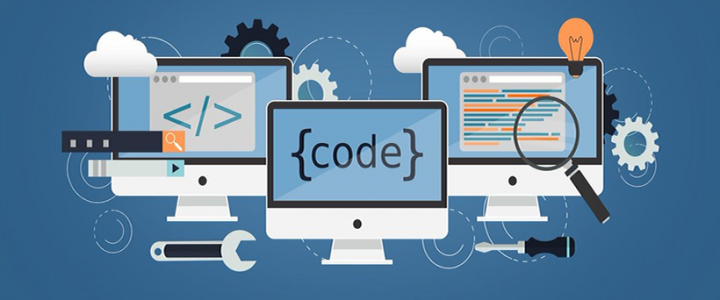
| Physics I – 12 CFU | |
| DidatticaWeb | |
| richetta@uniroma2.it | |
| +39 06 72597197 | |
| Office Location | Bldg. Ingegneria Industriale room 3135/9 |



| Physics I – 12 CFU | |
| DidatticaWeb | |
| richetta@uniroma2.it | |
| +39 06 72597197 | |
| Office Location | Bldg. Ingegneria Industriale room 3135/9 |

| 1 YEAR | 2 semester | 12 CREDITS |
| Maria Richetta | 2019-20 2020-21 didatticaweb |
| Emmanuele Peluso – emmanuele.peluso@uniroma2.it |
2021-22 to 2025-26 |
| didatticaweb Code: 8037948 SSD: FIS/01 |
OBJECTIVES
LEARNING OUTCOMES:
Students will improve their knowledge under three main aspects: a) the comprehension and the related capability to articulate the arguments discussed throughout the course, using the proper scientific vocabulary and style; b) the methodological attitude toward complex problems, more specifically, to decompose a physical phenomenon into simpler elements to reach efficaciously a correct explanation; c) an elastic, fluid and reactive way of thinking, based on an inquisitive and hungry developed attitude toward new challenges.
KNOWLEDGE AND UNDERSTANDING:
Knowledge of the main arguments related to classical mechanics, gravitation, mechanical waves, elastic properties of solids and thermodynamics. Identification of the physical quantities and of the conservation principles needed to explain the main physical phenomena behind the above reported topics. Understanding scientific texts related to the course, and the acquisition of proper vocabulary and style.
APPLYING KNOWLEDGE AND UNDERSTANDING:
Capability to achieve the correct solution of complex classical mechanical, gravitation, mechanical waves, elastic properties of solids and thermodynamics problems, through an effective and methodologically correct understanding and application of the principles governing the physical phenomena described. Capability to apply the acquired scientific way of thinking to new problems by comprehending, analysing and also modelling autonomously.
MAKING JUDGEMENTS:
Students are supported to improve their critical way of thinking and to develop an independent judgment able to pose, refine and elaborate scientific questions. The purpose is to pave the way to a free and active research spirit based on a questioning elastic and hungry mind.
COMMUNICATION SKILLS:
The students are expected to master, through familiarity with the arguments studied and through a developed practice refined in the framework of the course, a specific focus, style and proper scientific vocabulary.
LEARNING SKILLS:
Capability to understand, analyse, and model a physical phenomenon crossing different principles learnt during the course. Considering problems related to the topics of the course, students are expected to solve them and articulate the reasons behind the main assumptions followed. An inquisitive attitude, a proper scientific way of reasoning and communicative skills are therefore expected to be acquired during the course.
SYLLABUS
Mechanics (main arguments considered):
• Measurements and fundamental quantities; coordinate systems; elements of vector calculus;
• Relative motion and Galilean transformation; Inertial and non-inertial frames of reference; Fictitious forces;
• The point mass concept; kinematics; from rectilinear to general curvilinear motion on a plane; dynamics; the principle of conservation of momentum; Newton’s laws; the concept of force as interaction; angular momentum; torque; impulse; energy and work: conservative and dissipative forces; conservation principles; discussion of potential energy curves.
• From the point-mass to systems of particles: external and internal forces; Center of Mass (CM): definition, calculus and dynamics; angular momentum and torque for systems; the CM and laboratory frame of reference; König theorem part I and part II; energy of a system; reduced mass;
• Collisions: generality, impact parameter; elastic, partially inelastic and perfectly inelastic collision;
• From systems to the rigid body; moment of inertia: main properties and relationships; statics and dynamics; work on a rigid body; kinetic energy of a rigid body; pure rolling and sliding; rolling friction; systems with variable mass;
• Oscillatory motion: simple harmonic motion; energy of simple harmonic motion; superposition of simple harmonic motions; coupled oscillators; damped oscillations; forced oscillations;
Elastic properties of solids (main arguments considered):
• Young, Shear and Bulk moduli; elastic and plastic deformations; elastic hysteresis.
Gravitation (main arguments considered):
• Kepler’ s laws; Cavendish experiment; Newton’s law of universal gravitation; gravitational potential; a reduced mass approach; bounded and unbounded orbits; escape velocity; geostationary orbit;
Mechanical waves (main arguments considered):
• generality; transverse and longitudinal waves: velocity and equation of the waves; sound waves; intensity of waves; interference; Doppler effect; supersonic waves;
Fluids (main arguments considered):
• Introduction to fluids; mechanical actions on fluids; statics of fluids; Torricelli’s experiment; Archimede’ s principle; Pascal’s principle; fluid and conservative forces; fluids in non-inertial frames of reference; fluids dynamics: Lagrangian and Eulerian approaches; stationary motions; volumetric flow rate; Bernoulli’ s equation; Venturi’ s effect; considerations on real fluids: laminar and turbulent flows; viscosity; Reynolds’ number; considerations on drag forces in fluids;
Thermodynamics (main arguments considered):
• Main concepts of thermodynamics; zeroth principle of thermodynamics; the first principle of thermodynamics; internal energy, heat and work; Ideal gases and ideal gas law; P-V diagram; molar specific heats; heat capacity; main processes in thermodynamics; real gases; Wan der Waals equation; phase transitions; second principle of thermodynamics; Carnot cycle; Carnot theorem; Clausius theorem; entropy; thermodynamic Universe; Enthalpy, Helmholtz free energy, Gibbs free energy; Dalton’ s principle.
Texts
Students can use the book that best suits them. However, the references cited below are the ones considered during the course:
1. “Fundamental University Physics Volume 1: Mechanics”, by Alonso & Finn
2. “Fundamentals of Physics”, by Halliday & Resnick
3. “Physics for Scientists and Engineers”, by Serway & Jewett

| 1 YEAR | 2 semester | 9 CFU |
| Prof. Paolo Salvatore | 2019-20 |
| SALVATORE PAOLO – LHOTKA CHRISTOPH HEINRICH |
2020-21 |
| Francesca Tovena – tovena@mat.uniroma2.it Andrea Santi |
2021-22 |
|
Andrea Santi (6) |
2023-24 |
|
Andrea Santi (6) |
2024-25 |
|
Andrea Santi (6 cfu) – santi@mat.uniroma2.it |
2025-26 |
| Code: 8037949 SSD: MAT/03 |
The course aims to provide an introduction to linear algebra and Euclidean analytical geometry.
KNOWLEDGE AND UNDERSTANDING: At the end of the course, the student is supposed to know the notions of vector space, linear combination, generated vector subspace, linear dependence and independence, basis, solution of a linear system, matrices and their rank, linear applications, kernel and image, diagonalisation of linear applications and quadratic forms, geometric subspaces and their position, conics and their classification criteria.
APPLYING KNOWLEDGE AND UNDERSTANDING:
At the end of the course, the student is supposed to be able to determine the rank of a matrix, to discuss the solvability and to solve linear systems with a finite number of indeterminates, to determine the dimension and a basis of subspaces of numerical spaces or geometric vectors, to apply the Gauss method of reduction, to represent linear applications between vector spaces of finite dimension and to determine their kernel and image, to discuss the diagonalisation of square matrices and to diagonalise them, to represent linear geometric subspaces and their intersections/subspaces in parametric and Cartesian form, to classify plane conics, to represent and classify quadratic forms, to apply the notions of linear algebra to the study of geometric situations and vice versa.
MAKING JUDGEMENTS: The student will be able to discuss and verify the correctness of reasoning involving the studied notions of linear algebra and Euclidean analytic geometry. The student will also be able to apply linear algebra in solving problems in affine and Euclidean geometry.
COMMUNICATION SKILLS: The student will be able to explain and discuss the solution of problems; he/she will also be able to discuss and correctly reproduce definitions and demonstrations of results related to vector spaces, affine and Euclidean spaces.
LEARNING SKILLS: The student will be able to read and learn by himself more advanced topics of linear algebra related to solving linear systems and matrix decompositions useful for numerical applications.
Vector Spaces and Subspaces
Vector spaces and subspaces.
Linear dependence and independence.
Steinitz’s theorem.
Bases and dimensions.
Sum and intersection of vector subspaces.
Grassmann formula.
Linear Applications
Linear applications.
Image, kernel and rank of a linear application.
The group of automorphisms of a vector space.
Matrices and Rank
Matrices and rank of a matrix.
Gauss method for calculating the rank.
Linear Systems
Linear systems.
Compatible systems.
Rouche–Capelli theorem.
First and second uniqueness theorems.
Parameter dependent systems.
Solving a linear system with Gauss elimination.
Reduced systems.
Matrices and Linear Applications
Relation between matrices and linear applications.
Invertible matrices.
Orthogonal matrices.
Change of basis.
Determinants
Definition, calculation methods, and applications.
Binet’s theorem.
Kronecker’s theorem.
Cramer’s theorem.
Complex Numbers
Diagonalization and Orthogonality
Diagonalization of matrices.
Positive definite scalar products.
Gram–Schmidt orthogonalization algorithm.
Spectral theorem.
Affine and Euclidean Spaces
Dimensions of an affine space.
Free and applied vectors.
Affine subspaces of a Euclidean space and their positions.
Parametric and Cartesian equations of an affine subspace.
Dependence and independence of points.
Mutual position of affine subspaces.
Systems of subspaces: bundles and stars.
Affinity.
Orientation.
Euclidean Geometry
Orthonormal references.
Vector product.
Areas and volumes.
Conics
Metric classification of conic curves.
The exercises performed are considered an integral part of the program.

| 1 YEAR | 2 semester | 9 CFU |
| Flavio Lombardi | 2018-19 |
| Enrico Simeoli | 2019-20 |
|
Walter Liguori |
since 2020-21 |
| Gianluca ROSSI | 2023-24 |
|
Cesare ROSETI Mauro DE SANCTIS Tommaso ROSSI |
2024-25 |
| Code: 8037947 SSD: ING-INF/05 |
OBJECTIVES
LEARNING OUTCOMES:
The course aims to provide students with knowledge and skills for effectively using computer methodologies and tools in the engineering field, especially for developing algorithms.
KNOWLEDGE AND UNDERSTANDING:
Acquire knowledge of the internals of computer architectures.
Acquire knowledge of data structures and algorithms.
Acquire knowledge of the principles of programming languages, including the object-oriented paradigm and tools and techniques for software development.
APPLYING KNOWLEDGE AND UNDERSTANDING:
Acquire the ability to analyze problems and design and implement software artifacts addressing them.
Acquire the capability of a group working on software development and documentation.
MAKING JUDGEMENTS:
Being able to choose appropriate languages and tools for software development.
Being able to evaluate the correctness and efficiency of a software implementation.
COMMUNICATION SKILLS:
Be able to describe and document software artifacts correctly and effectively.
LEARNING SKILLS:
Using the technical documentation and the reference manuals of systems, products and languages effectively.
COURSE SYLLABUS
“Introduction to the computational method. Von Neumann architecture. Programming languages: assembler, compiled, and interpreted languages. Basic concepts of programming languages: variables; data types and assignment; control structures (loops, conditional selection); basic data structures; input and output. Functions and recursion. Searching and sorting algorithms. Computational complexity. Dynamic data structures: array; linked lists; trees; hash tables. Object-oriented programming.
The programming languages taught are Python and C.”